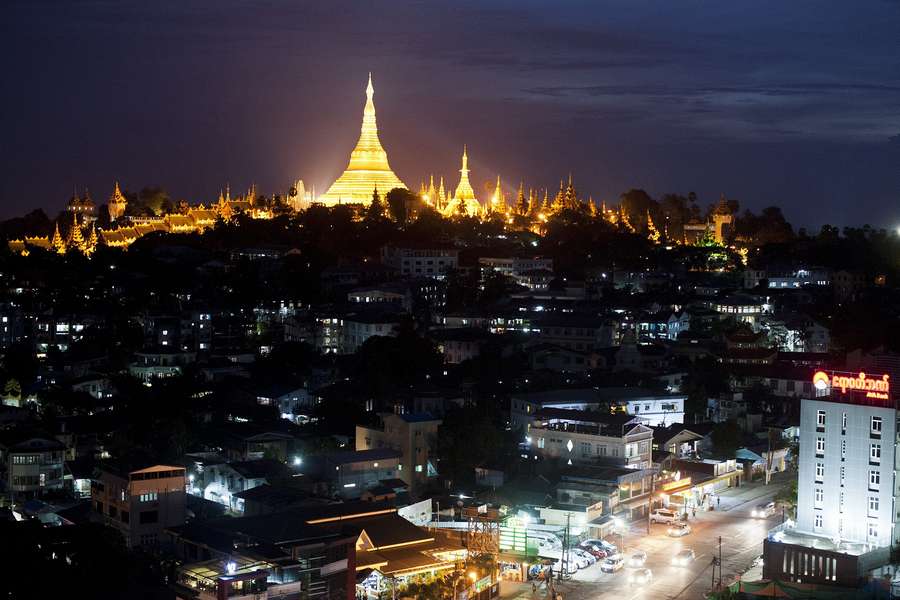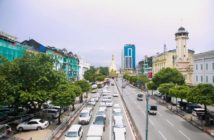 There are cities in the world known for their food, their culture, their geography or their sites in particular. But few are as iconic in representing the might of a once glorious civilization as the one we look at in this month’s Let’s Go. Majestic as they come and a true icon of Southeast Asia, the beautiful traits of this city of bridged cultures speaks volumes of its history, its present and the way in which it came to be the commercial focal point of Myanmar. This edition of Hot Magazine presents Yangon, the home and heart of Pagodas.
There are cities in the world known for their food, their culture, their geography or their sites in particular. But few are as iconic in representing the might of a once glorious civilization as the one we look at in this month’s Let’s Go. Majestic as they come and a true icon of Southeast Asia, the beautiful traits of this city of bridged cultures speaks volumes of its history, its present and the way in which it came to be the commercial focal point of Myanmar. This edition of Hot Magazine presents Yangon, the home and heart of Pagodas.
 Located in the lower region of Myanmar, Yangon translates to “The end of Conflict.” The city’s name was formerly Rangoon, during the period in which the country was subjected to British colonialism after it was taken over for the second time in 1852 to make it the hub of British Burma. The colonization did however provide the city with certain infrastructural advantages, constructing houses and amenities such as hospitals and universities, among them the University of Yangon, which is the oldest in the country and the best known.
Located in the lower region of Myanmar, Yangon translates to “The end of Conflict.” The city’s name was formerly Rangoon, during the period in which the country was subjected to British colonialism after it was taken over for the second time in 1852 to make it the hub of British Burma. The colonization did however provide the city with certain infrastructural advantages, constructing houses and amenities such as hospitals and universities, among them the University of Yangon, which is the oldest in the country and the best known.
 Yangon today is the city with the largest population in Myanmar boasting an estimated number of seven and a half million inhabitants. The city, until last decade, remained the country’s capital, before this was shifted to the purposefully laid out city of Naypyidaw. Yangon began growing as a city during the mid-1990’s, when its housing began to develop in areas previously uninhabited turning toward the location of the city’s international airport. Today therefore possesses an array of different business centres as opposed to a specific central business district. Also done in the mid 1990s, specifically in 1996, was the delineation of a collective of edifices that were protected by law and whose modification was prohibited. Thus, to protect the identity of the city, the Yangon City Heritage list was created, forbidding the tearing down of structures without the permission of the city government. The list, comprising 188 buildings composed mostly of colonial buildings from the era of the British and religious shrines, is the reason most of the city retains an exquisite flavor of its unique identity.
Yangon today is the city with the largest population in Myanmar boasting an estimated number of seven and a half million inhabitants. The city, until last decade, remained the country’s capital, before this was shifted to the purposefully laid out city of Naypyidaw. Yangon began growing as a city during the mid-1990’s, when its housing began to develop in areas previously uninhabited turning toward the location of the city’s international airport. Today therefore possesses an array of different business centres as opposed to a specific central business district. Also done in the mid 1990s, specifically in 1996, was the delineation of a collective of edifices that were protected by law and whose modification was prohibited. Thus, to protect the identity of the city, the Yangon City Heritage list was created, forbidding the tearing down of structures without the permission of the city government. The list, comprising 188 buildings composed mostly of colonial buildings from the era of the British and religious shrines, is the reason most of the city retains an exquisite flavor of its unique identity.
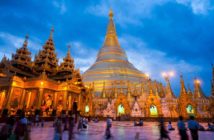 Among those protected buildings is one of Yangon’s – and Southeast Asia’s – most prized assets when it comes to Buddhism. The Shwedagon Zedi Daw, known most prominently as the Shwedagon Pagoda, is one of the greatest relics in the country. Measuring just short of 100 metres and soaring above almost every building in the city, its essence represents Myanmar. It is situated atop the Singuttara Hill, which gives it even greater relief and makes it visible from almost anywhere in Yangon.
Among those protected buildings is one of Yangon’s – and Southeast Asia’s – most prized assets when it comes to Buddhism. The Shwedagon Zedi Daw, known most prominently as the Shwedagon Pagoda, is one of the greatest relics in the country. Measuring just short of 100 metres and soaring above almost every building in the city, its essence represents Myanmar. It is situated atop the Singuttara Hill, which gives it even greater relief and makes it visible from almost anywhere in Yangon.
 The Shwedagon Pagoda has a disputed origin, but it is largely believed to have been constructed by the Mon people and completed about eleven centuries ago. Legend has it however that the pagoda is twenty six centuries old, something which, if true, would make it the oldest known pagoda in the history of the world.
The Shwedagon Pagoda has a disputed origin, but it is largely believed to have been constructed by the Mon people and completed about eleven centuries ago. Legend has it however that the pagoda is twenty six centuries old, something which, if true, would make it the oldest known pagoda in the history of the world.
But it wasn’t always this imposing. The 14th century was a saving grace for a structure which had fallen unattended for years, until King Binnya erected its peak to an imposing eighteen metres, which by today’s standards would have seemed mediocre. Only one hundred years later, it was under renovation again under Queen Binnya Thau, who more than doubled its height to make it soar an impressive forty metres. It was there where the pagoda began to gain greater and greater fame, leading to its eventual iconic status – already in that era – as the pagoda with the greatest pilgrims from the entire area of Burma.
 The Shwedagon pagoda suffered further damage again in the centuries succeeding Queen Binnay’s rule, when natural disasters such as earthquakes brought it near its knees yet again. This was to be brief, as in an effort to restore it, King Hsinbyunshin raised its height to its iconic 99 meters at which it stands today. This was topped by a crown umbrella in donated in the 19th century by King Mindon Min, something which gives it the distinctive shape at the top. Since then, a few earthquakes have at times damaged part of the pagoda, which has nonetheless survived nature’s attempts to floor it.
The Shwedagon pagoda suffered further damage again in the centuries succeeding Queen Binnay’s rule, when natural disasters such as earthquakes brought it near its knees yet again. This was to be brief, as in an effort to restore it, King Hsinbyunshin raised its height to its iconic 99 meters at which it stands today. This was topped by a crown umbrella in donated in the 19th century by King Mindon Min, something which gives it the distinctive shape at the top. Since then, a few earthquakes have at times damaged part of the pagoda, which has nonetheless survived nature’s attempts to floor it.
The months of February and March see the celebration of the Shwedagon Pagoda festival, the most revered pagoda celebration in Myanmar.
One more remarkable aspect of Shwedagon Pagoda is the parks which surround it. Known for their beauty and size, their maintenance level is above average of the rest and boast of amble vegetation and water sources. The most famous among them is Kandawgyi Nature Park, which at its 150 acres of land is one of the biggest in the city. In it, one finds Kandawgyi Lake, an artificial body of water which was created to provide a clean water supply back during the colonial period all around its eight kilometre circumference. At a relatively shallow depth, the lake’s metre or so below water hosts small life forms and is a frequent habitat for birds and other animals.
 The most remarkable aspect of the pagoda is the material of which it is made, coated with vast amounts of gold plating, which has, since the first time Queen Shin Sawbu donated her weight of it, been offered by many for the prolongation of its upkeep and maintenance. But the crown jewel, of the entire structure, and never better said, is the very top of the stupa, which is garnished with a 76 karat diamond stone which was donated to the iconic monument by Queen Elizabeth.
The most remarkable aspect of the pagoda is the material of which it is made, coated with vast amounts of gold plating, which has, since the first time Queen Shin Sawbu donated her weight of it, been offered by many for the prolongation of its upkeep and maintenance. But the crown jewel, of the entire structure, and never better said, is the very top of the stupa, which is garnished with a 76 karat diamond stone which was donated to the iconic monument by Queen Elizabeth.
 Yangon does however boast of many more attractions aside from the Shwedagon Pagoda. Its architectonic features are one of the most curious out of any city in Asia, blending a whimsical combination of western and traditional Asian culture. As such, Yangon has the most elevated number of buildings from the colonial era in comparison to other nations in southeast Asia. It’s end of century architecture is one of the most original traits, and makes the city contrast greatly in terms of diversity and picturesque sites. Most of such edification are found in downtown Yangon, where the British had the major part of their operational base. To this date, despite the decaying aspect of many of such buildings, they remain highly valued and fetch high prices in the market due to their beauty and the symbolism of their features.
Yangon does however boast of many more attractions aside from the Shwedagon Pagoda. Its architectonic features are one of the most curious out of any city in Asia, blending a whimsical combination of western and traditional Asian culture. As such, Yangon has the most elevated number of buildings from the colonial era in comparison to other nations in southeast Asia. It’s end of century architecture is one of the most original traits, and makes the city contrast greatly in terms of diversity and picturesque sites. Most of such edification are found in downtown Yangon, where the British had the major part of their operational base. To this date, despite the decaying aspect of many of such buildings, they remain highly valued and fetch high prices in the market due to their beauty and the symbolism of their features.
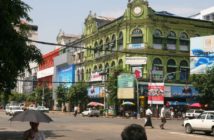 The weather in Yangon is tropical and boasts of a monsoon season which gives it rainy summers and humid climate most of the year. Temperatures during this time are relatively lower, as the showers make the average yearlong heat more bearable. Visiting during the months of November through January is recommended to catch the good combination of bearable heat and clear skies. However, if you want cooler temperatures and don’t mind a splash, the summer is definitely a time you can venture to this rustic city.
The weather in Yangon is tropical and boasts of a monsoon season which gives it rainy summers and humid climate most of the year. Temperatures during this time are relatively lower, as the showers make the average yearlong heat more bearable. Visiting during the months of November through January is recommended to catch the good combination of bearable heat and clear skies. However, if you want cooler temperatures and don’t mind a splash, the summer is definitely a time you can venture to this rustic city.
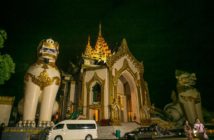 Yangon, with the marvelous nature of its architecture, its colonial history and its importance as a hub of iconic Buddhism, is one of the most beautiful cities in Asia. It reflects every aspect of Myanmar’s complex but rich culture and tells the story of a place which has seen its essence coalesce with that of western touches, both cultural and structural. Whether you go on a religious pilgrimage to view the marvelous Shwedagon Pagoda or whether you become captivated by the emblematic mix of east meets west architecture in the streets, Yangon is definitely one of the more captivating destinations on the map. If you have yet to travel there, it is highly advisable that you do.
Yangon, with the marvelous nature of its architecture, its colonial history and its importance as a hub of iconic Buddhism, is one of the most beautiful cities in Asia. It reflects every aspect of Myanmar’s complex but rich culture and tells the story of a place which has seen its essence coalesce with that of western touches, both cultural and structural. Whether you go on a religious pilgrimage to view the marvelous Shwedagon Pagoda or whether you become captivated by the emblematic mix of east meets west architecture in the streets, Yangon is definitely one of the more captivating destinations on the map. If you have yet to travel there, it is highly advisable that you do.
Must See: Shwedagon Pagoda: The Yangon skyline wouldn’t be the same without the Shwedagon Pagoda, the city’s most popular heritage and religious site. At over 2,600 years of age, Shwedagon is the oldest pagoda in the world.
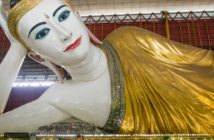 Chaukhtatgyi Buddha: Chaukhtatgyi Buddha Temple is the most well-known Buddhist temples in Yangon, it houses one of the most revered reclining Buddha images in the country.
Chaukhtatgyi Buddha: Chaukhtatgyi Buddha Temple is the most well-known Buddhist temples in Yangon, it houses one of the most revered reclining Buddha images in the country.
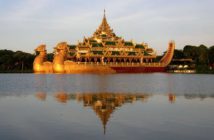
Kandawgyi Lake: One of two lakes within city limits, Kandawgyi Lake was created to supply clean water to the city during British rule. The lake is man-made and channeled from Inya Lake, the other lake within Yangon. Kandawgyi is a staple backdrop in Burmese commercials and movies, thanks to its scenic location overlooking Shwedagon Pagoda.
Must Wear: When visiting all Myanmar Pagodas long pants or skirts must be worn. Shorts for men or women are not acceptable. Also, shoes must not be worn on Pagoda Grounds unlike Thailand wear you can wear shoes on Temple Grounds but not when entering a Temple.
 Must Eat: Tea Leaf Salad: This is the most popular Myanmar food. To make the dish, the sour, slightly bitter leaves are mixed by hand with shredded cabbage, sliced tomatoes, nuts and peas. The dish can be a snack, an appetizer or, coupled with a plate of rice.
Must Eat: Tea Leaf Salad: This is the most popular Myanmar food. To make the dish, the sour, slightly bitter leaves are mixed by hand with shredded cabbage, sliced tomatoes, nuts and peas. The dish can be a snack, an appetizer or, coupled with a plate of rice.
 Shan-Style Noodles: This popular dish is a thick porridge made from chickpea flour. The sticky yellow stuff is served over thin rice noodles and marinated chicken or pork. It’s topped with chili oil and pickled veggies and broth. If you’re interested in savoury flavours, you should try this dish.
Shan-Style Noodles: This popular dish is a thick porridge made from chickpea flour. The sticky yellow stuff is served over thin rice noodles and marinated chicken or pork. It’s topped with chili oil and pickled veggies and broth. If you’re interested in savoury flavours, you should try this dish.
 Mohinga. No conversation about Myanmar food is complete without a mention of Mohinga. This tempting dish is made from round rice noodles served in a hearty, herbal-based broth, often supplemented with the crunchy pith of the banana tree. It is a favourite breakfast dish, but also a common snack at any time of day or night.
Mohinga. No conversation about Myanmar food is complete without a mention of Mohinga. This tempting dish is made from round rice noodles served in a hearty, herbal-based broth, often supplemented with the crunchy pith of the banana tree. It is a favourite breakfast dish, but also a common snack at any time of day or night.
How To Get There: The quickest and easiest way to get to Yangoon from Bangkok is by air and the flight is short, just a little over an hour. As of this writing Air Asia had round trip fares of just 3,790 baht per person.


